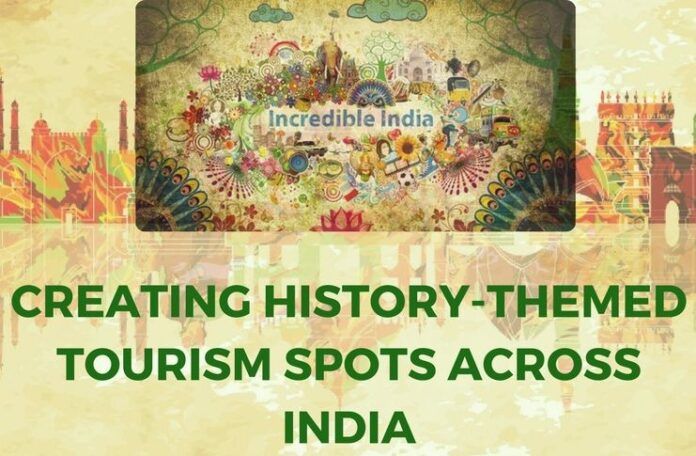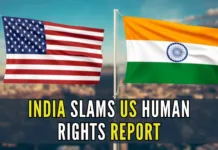
Indian history will prove to be strength for the tourism sector
[dropcap color=”#008040″ boxed=”yes” boxed_radius=”8px” class=”” id=””]T[/dropcap]ourism has been identified by the Government of India one of the highest potential revenue earners. The other advantages of this industry are it can earn huge foreign-exchange (apart from its domestic potential), it doesn’t consume any material resources as it is purely service-centric, it can generate a lot of employment, direct and indirect, it has pan-India reach, and it is easy to get private sector to invest in it.
We can tell the story of Indus Valley Civilization through tourism, but since a significant part of the civilization is now in Pakistan and Afghanistan, we can’t exploit it much.
There are many ways tourism can be developed in India, but we need specific ideas, not generic statements of intent. This article attempts to offer one such idea. More ideas we are able to generate and implement the merrier.
[dropcap color=”#008040″ boxed=”yes” boxed_radius=”8px” class=”” id=””]T[/dropcap]he long and interesting history of India is a great strength very few countries in the world can match. Countries with much less depth and width of history have exploited this opportunity very well with “re-enactments”. It is high time we claimed our market share in this realm too. And since there are plenty of places of historic importance across the country, History-themed Tourism, particularly re-enactment of important historic events and even living experience in yester years will be ‘Incredible India’, which tourists the world over would enjoy.
We can tell the story of ‘Indus Valley Civilization ‘ through tourism, but since a significant part of the civilization is now in Pakistan and Afghanistan, we can’t exploit it much.
Our next best bet is telling the stories of the many dynasties, starting from the Magadh dynasty of the 6th Century BC, emergence of Buddhism and Jainism, Chandragupta Maurya, Asoka, Gupta dynasty (Chandragupta I) of North India, and the stories of the dynasties of the Cholas, the Pandyas, the Cheras, the Pallavas and the Chalukyas of South India. We can also tell the stories of Muslim Invasions from the 12th century AD to its demise at the beginning of the 19th Century AD, and the British invasion from the late 18th century AD to Independence in 1947.
[dropcap color=”#008040″ boxed=”yes” boxed_radius=”8px” class=”” id=””]I[/dropcap]n the case of each of the above kingdoms, a small group of villages (preferably not fertile) can be selected from the very land falling within the respective kingdoms, near popular landmarks in the respective geographical territories, and develop a small part of the kingdom, including the capital city, a palace, court, replica of a few popular temples of those days, etc in the style of construction of that period, and build a replica of infrastructure of those days including houses, huts, farms, roads, etc. with amenities and facilities of that period. A typical village, an important battlefield etc of those days can also be created, for tourists to view, walk around and experience.
The Government will earn its revenues when tourism develops.
Tourists can be helped to feel the life of those historic days and even given dress of those days to wear as participants of mock-life in that kingdom, walking and commuting by the modes of transport of those days (like horse/ cattle drawn carriages), watching life in the streets, palace, courts and farms, watching vocations of those days and even playing games of those days. They can stay in houses of those days as guests, and be served food of that period (at least for those who want). Tourists can visit all the tourist spots created and experience the life of those days, say for a whole day (or more) in each kingdom.
Since, India has a successful and thriving film industry in every state, conceptualizing and creating these infrastructures cost-effectively will be fairly easy.
Artefacts of those times can be made by local craftsmen and sold as souvenirs.
All these will be very memorable unique experiences for the tourists which they will cherish for all their lives, and spread word-of-mouth about.
Each of these kingdoms can employ villagers from the same locality, trained appropriately.
[dropcap color=”#008040″ boxed=”yes” boxed_radius=”8px” class=”” id=””]T[/dropcap]he Government will earn its revenues when tourism develops. Most of the investment, ideas for development, the creation of ancillary services including travel, stay and food facilities, state-of-the-art light & sound shows, etc and marketing of the project, can all be left to private players, the Government being only an enabler. Everyone benefits, the Government, investors, local employees and tourists.
Similarly, periods of Muslim invasion and British invasion can be depicted.
Each of these kingdoms can be given on PPP (say BOOT) basis with liberal terms so that the best of investors with deep pockets and expertise are attracted and they are able to profit from this venture.
[dropcap color=”#008040″ boxed=”yes” boxed_radius=”8px” class=”” id=””]A[/dropcap]cquisition of vast areas of land for such projects will be difficult. For the sellers of land who are interested, the private investor in each project can offer part of the compensation as money and the rest as equity in the project, with the promise of taking the project public within a specified period. The Government can mediate and help create a SPV for each of such projects to protect the interest of the land-givers. Land-givers can also be given direct/ indirect jobs or sub-contracts in the project, subject to their suitability.
Since there will be many such kingdoms across India, different kinds of package tours can be configured to take the tourists to many/ all the kingdoms, making the necessary travel, stay, food (and emergency medical) arrangements for the tourists.
Creating such history-themed tourism will not only add to our GDP and enhance employment opportunities but also help Indians and foreigners learn and experience Indian history, culture and heritage better and cement our people-to-people contact with the rest of the world and hence enhance our soft power.
Note:
1. Text in Blue points to additional data on the topic.
2. The views expressed here are those of the author and do not necessarily represent or reflect the views of PGurus.
- How BJP can get 33%+ vote share in TN - April 1, 2024
- A transparent, equitable electoral funding alternative - March 19, 2024
- How TN BJP can come to No. 1 or No. 2 in 2024 LS polls - January 11, 2024






Hello,
I say this is a great idea and when implemented will boost India’s economy and status in the world. as this involves India’s history, one suggestion would be to first read and review our historical books to see if the information is accurate and is inclusive of all the dynasties that have reigned India. It is important to promote Indian History in the correct manner as it not only helps the world develop a view on India but also the people living in India. How they perceive India is how they will also perceive themselves.